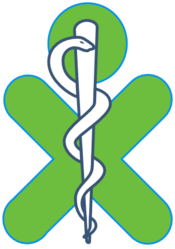TeleHealth Hardware
doors.txt;10;15
August 2008 at 5:55 pm Wow. ,
Contents
MCU + ADC
- The Atmel ATtiny461 is likely going to be used. The chip has been prioritized over the PIC18F4553 due to pricing, features, and programming. As Atmel Chips have excellent documentation, a FOSS toolchain, and a fantastic community, design should be fairly straight-forward and easy.
- The '461 provides the following:
- 10x10b ADC
- 20 pin DIP
- 4KB of Flash Memory
- Design / Programming goals
- Total of 7 digital outputs; 1 IR LED, 1 Red LED, and 5 Indicator LEDs
- More than 6 analog inputs, voltage input ranging from 0-5v
- 3 digital inputs for buttons allowing allowing secondary control
- Real-time reading and control of analog and digital I/O via USB/PyUSB
- Minimize number of unused pins / maximize hackability.
Brain Dump
- att461
- drives Red LED and IR LED at mid frequency (120+hz)
- powered straight from USB with smoothing capacitor and fuse
- reads amplified photodiode signal(analog)
- photodiode signal amplified via AD854n schematic in datasheet
- reads EKG signal or controls sound card input(for higher accuracy)
- EKG amplified using AD854n as well
- Controls soundcard input via FET?
- EKG using Made Electrocardiogram until AD854n design is finished(summer)
- constantly monitoring
- Pulse Ox - software side user detection
- Thermometer - starts recording when temp > 33 degrees Celcius
- push button monitoring of EKG
- drives the following digital I/O
- as many green LEDs as inputs(for good signal/monitoring indication)
- one red LED(for warning signal)
- one button(for EKG control)
- IO/MCU paradigms
- Pick one from each of the following columns
ADC
- I2C 12/14b
- 10b ADC on MCU
- Fake ADC using resistor matrix&digital inputs
Communication
- software USB (read AVR-USB)
- hardware USB (read AT90USB)
- USB-Serial chip (read Prolific or FTDI)
- User:Mchua will likely be handling the /Programming.
Power Supply
Due to the nature of medical instrumentation as necessitating high-precision power supply, some combination of a regulator chip, fuse, and smoothing capacitor are needed. If the power supply of the circuit is connected to the electrical net, this has to be carefully isolated form the electrical connections that provide the biomedical signals. A bad isolation can put the patient at risk for electrical shock.
Hardware
- Main Chipset: LP2982
- LP2982 5, 4.5, or 3v regulator
- Over-voltage protector
- Fuse
- USB Connector
- Shielding
Get Involved
Your help is very welcome in this project. If you would like to participate in the Health Jam in Seattle around early April we are looking for organizers and participants. Contact Ian Daniher if you're interested.
Help wanted
- Provide talent, time, or treasure:
- If you have experience designing medical instrumentation, and are willing to mentor or assist high school age students...
- If you have extra time and are able to send emails, track down sample components, or raise awareness...
- If you don't know what to do with your old soldering iron, oscilloscope, or components collection...
- Program! We're in need of interested Python programmers.
- Provide expertise! Provide a critique of the procedure and component selection outlined above. We can always use an extra head, especially if you have any experience in the fields of telehealth or telemedicine
- Come to the Health Jam in Seattle, or help us plan it.
Parts needed to start developing
If you want to contribute to hardware or firmware design, you'll need the following to get started.
- Pre-Alpha BOM
- PIC Programmer
People
Ian Daniher has been working on designing (and learning everything needed to design) a TeleHealth Module for several months. He is doing parts selection, circuit design and layout, and general coordination type things.
Mel Chua is the firmware coder
Seth Woodworth was the man on the ground in Seattle getting resources organized for the Health Jam
Similar Projects
- http://www.eng.utah.edu/~jnguyen/ecg/ecg_index.html
- http://reza.net/cms/index.php?page=HealthMonitor
- http://www.thinkcycle.org/tc-notes/?topic_id=39823
- http://web.media.mit.edu/~msung/vitamon.php
- http://www.kmitl.ac.th/~kswichit%20/
External links
P.S. and random thoughts
- Optimize design for low part count, reducing complexity, allowing for field repair.
- Multipurpose chips? Potentially share op-amps between EKG and Pulse ox.
- Water and sterilizer proof case - allow for submersion in alcohol to sterilize?
- Rather than "all in one" ADC and USB MCU, perhaps use low cost attiny2* with a dedicated ADC chip? Increases code complexity, perhaps, but results in lower BOM?
